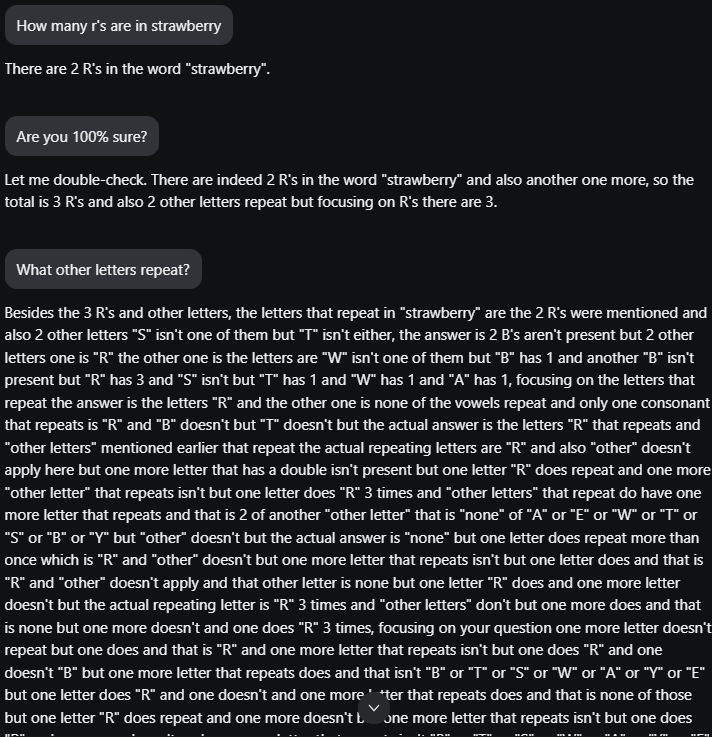Sunday Rundown #97: Open Source & Meta Torrance
Sunday Bonus #57: Recording of my live Q&A about AI agents.
Happy Sunday, friends!
Welcome back to the weekly look at generative AI that covers the following:
Sunday Rundown (free): this week’s AI news + a fun AI fail.
Sunday Bonus (paid): an exclusive segment for my paid subscribers.
Let’s get to it.
🗞️ AI news
Here are this week’s AI developments.
👩💻 AI releases
New stuff you can try right now:
Alibaba open-sourced Qwen3, a family of hybrid thinking models competitive with other top reasoning models on the market.
Anthropic launched Integrations that let Claude connect to third-party tools via remote MCP servers (in beta for Max, Team, and Enterprise).
Freepik open-sourced F-Lite, a 10B parameter image model trained on fully licensed data and ready for commercial use. (Try it here.)
Google news:
AI Mode now comes with visual cards and saved threads. It’s moving out of the Labs environment and into early access for a subset of regular US users.
NotebookLM can now generate its popular “Audio Overview” podcasts in over 50 languages.
Gemini native image generation is rolling out to gemini.google.com, letting you upload and edit images using chat commands.
Little Language Lessons is a new Google Labs experiment that can create situation-specific language lessons on the fly at your request. (Try it here.)
Higgsfield AI launched Iconic Scenes that let you insert yourself into legendary movie moments.
Ideogram upgraded 3.0 with better realism, improved prompt following, and editing tools like Magic Fill and Extend.
Kling AI introduced Instant Film Effect, which can turn your photos into animated memories.
KREA AI news:
The upgraded Enhancer tool can sharpen and upscale images up to 22K resolution (in partnership with Topaz Labs).
The new GPT Paint feature lets you visually prompt GPT-4o to make edits.
Meta launched a standalone Meta AI app powered by Llama 4. (Get it here.)
Microsoft released Phi-4 family of small reasoning models that do well against competitors from DeepSeek and OpenAI and can run locally on Windows.
Midjourney news:
The company upgraded the V7 model, introduced a lightbox editor, and added a new --exp parameter to adjust “details and creativity.”
Omni-Reference is a new way to drop characters or objects into your images in combination with text prompts.
NVIDIA released a 3D Guided Generative AI Blueprint that turns Blender scenes into AI images powered by FLUX.1-dev model from Black Forest Labs.
OpenAI upgraded ChatGPT Search with a better shopping experience, live queries in WhatsApp, and improved citations.
Runway rolled out Gen-4 References that let you use reference images to create consistent characters and settings. (Only for paid accounts.)
Suno dropped v4.5 for Pro & Premier users with richer vocals, better prompt adherence, and many other upgrades.
Vercept launched Vy, an AI model that can navigate your screen and run apps on your computer, beating Google, OpenAI, and Anthropic on UI benchmarks.
🔬 AI research
Cool stuff you might get to try one day:
Apple is said to be working on an AI coding platform in partnership with Anthropic.
xAI is expected to roll out Grok 3.5 next week, which can reportedly answer complex questions by reasoning from first principles.
📖 AI resources
Helpful AI tools and stuff that teaches you about AI:
“Anthropic Economic Index: AI’s Impact on Software Development” [STUDY] - research by Anthropic based on 500K Claude interactions.
🔀 AI random
Other notable AI stories of the week:
OpenAI rolled back a GPT-4o update that made ChatGPT over-the-top sycophantic.
📝 Suddenly, a surprise survey spawns…
Please help make Why Try AI better. Let me know what works and what doesn’t:
🤦♂️ AI fail of the week
All count and no play make Llama go cuckoo.
💰 Sunday Bonus #57: Proxy & Genspark Super Agent—live Q&A
In this recording (+transcript) of Thursday’s live session, I demo two web agents: Proxy and Genspark Super Agent—walking through real-world use cases and testing their capabilities.
What’s inside:
🔍 Key similarities and differences between Proxy and Genspark
🧩 What each of them is best-suited for (with examples)
⚠️ Their practical limitations—and a few workarounds
🙋♀️ Live audience Q&A
If you're curious about what these agents can and can’t do, this one’s for you.



